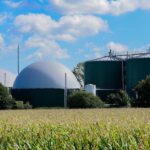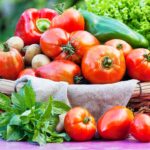The horticulture sector in South Africa plays a crucial role in the economy, contributing significantly to employment, food security, and export revenues. However, the industry faces various challenges, including climate variability, resource limitations, and increasing competition. To enhance productivity and sustainability, it is vital to adopt efficient practices. Here are ten effective ways to increase efficiency in South African horticulture.
1. Implement Precision Agriculture Techniques
Utilizing precision agriculture technologies, such as GPS mapping and soil sensors, can help farmers make informed decisions about planting, irrigation, and fertilization. By optimizing inputs based on real-time data, farmers can increase yields and reduce waste.
2. Adopt Sustainable Farming Practices
Integrating sustainable farming methods, such as crop rotation, cover cropping, and organic farming, can improve soil health and reduce the reliance on chemical inputs. Sustainable practices enhance biodiversity and resilience, leading to more efficient horticultural systems.
3. Invest in Drip Irrigation Systems
Water scarcity is a significant concern in South Africa. Implementing drip irrigation systems can conserve water and deliver it directly to the plant roots, ensuring efficient use. This method not only reduces water waste but also improves crop health and yield.
4. Enhance Post-Harvest Management
Improving post-harvest handling practices can significantly reduce losses and maintain product quality. Implementing better storage facilities, temperature control, and transportation logistics ensures that fresh produce reaches the market in optimal condition.
5. Utilize Greenhouse Technology
Greenhouses provide controlled environments that can extend growing seasons and improve crop quality. By investing in greenhouse technology, farmers can optimize light, temperature, and humidity levels, leading to more efficient production cycles.
6. Leverage Agricultural Research and Development
Staying informed about the latest agricultural research and technologies is crucial for increasing efficiency. Collaborating with research institutions can provide access to new varieties, pest management strategies, and innovative practices tailored to local conditions.
7. Embrace Digital Tools and Data Analytics
Digital tools, such as farm management software and mobile applications, can streamline operations and improve decision-making. Data analytics can provide insights into market trends, consumer preferences, and production efficiency, enabling farmers to adapt quickly.
8. Train and Empower Workforce
Investing in the training and development of farm workers enhances productivity and efficiency. Providing education on modern farming techniques, equipment handling, and safety protocols ensures a skilled workforce that can contribute to improved operations.
9. Create Collaborative Networks
Establishing cooperative networks among farmers can foster knowledge sharing, resource pooling, and collective marketing efforts. By working together, farmers can achieve economies of scale, reduce costs, and enhance market access.
10. Focus on Diversification
Diversifying crops and products can reduce risk and increase resilience in the face of market fluctuations. By growing a variety of fruits, vegetables, and herbs, farmers can cater to different consumer demands and minimize losses from crop failures.
Increasing efficiency in South African horticulture is essential for enhancing productivity, sustainability, and competitiveness in the global market. By implementing these ten strategies, farmers can optimize their operations, reduce resource waste, and contribute to a more robust agricultural sector. Embracing innovation and collaboration will be key to achieving long-term success in this vital industry.
Join 'Farmers Mag' WhatsApp Channel
Get the latest Farming news and tips delivered straight to your WhatsApp
CLICK HERE TO JOIN






